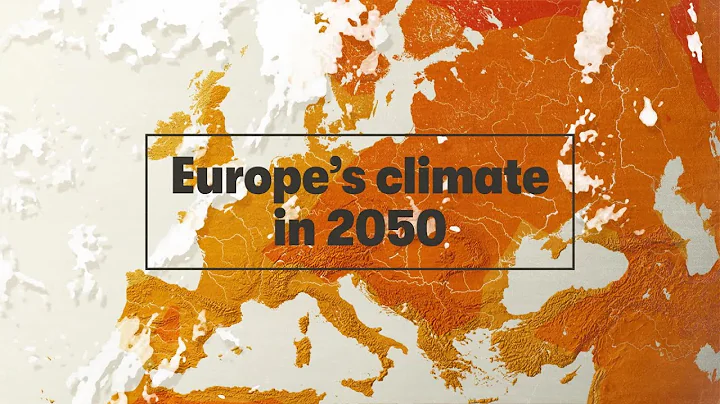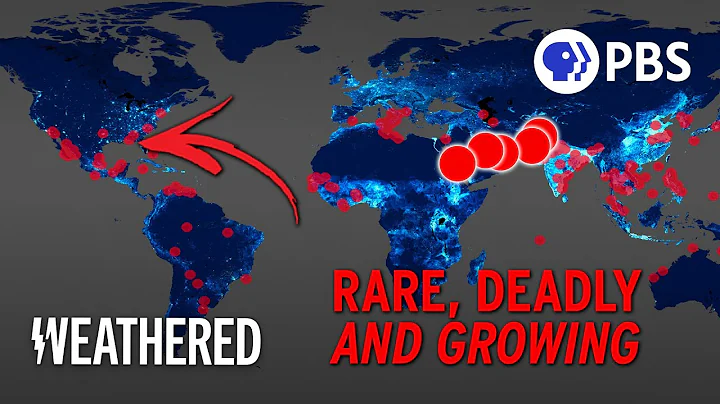Since entering the summer of 2022, extreme high temperature weather has occurred in many areas of the world. Extreme high temperature weather is now occurring more and more frequently, and it has been confirmed that it is closely related to global warming. A critical time point for whether humans can avoid the end of the world is 2025. Climate change is accelerating "abnormal" natural phenomena such as the melting of polar and glacial ice, according to a United Nations report. If we continue on this path, we will reach the climate point of no return by 2025, and from then on life on earth will face a very bad living environment.

Extreme weather will occur frequently in 2022. Does humanity still have a future?
According to a report recently released by the United Nations Intergovernmental Panel on Climate Change ( IPCC ), greenhouse gas emissions will reach the point of no return in 2025, making the future uninhabitable. In the scenarios assessed by the panel, limiting warming to around 1.5°C requires global greenhouse gas emissions to peak no later than 2025, and from then on they must reduce by at least 43% until 2030. Likewise, methane also needs to be reduced by about one-third.
Between 2010 and 2019, the global average annual greenhouse gas emissions reached the highest level in human history. Human-induced climate change is causing widespread and dangerous damage to nature and is affecting the lives of billions of people around the world, the report said. The people and ecosystems least able to cope with it will be hardest hit. Increasing heat waves, droughts and floods have exceeded the tolerance limits of plants and animals, causing mass deaths of species such as trees and corals. The simultaneous occurrence of these climate extremes creates cascading impacts that are increasingly difficult to cope with, leaving large numbers of people facing severe food and water insecurity.
Record-breaking concentrations of greenhouse gases in the atmosphere, and the associated accumulated heat, are pushing the planet into uncharted territory, with profound consequences for current and future generations. The report further concluded that the past seven years are expected to be the hottest on record in human history. As oceans continue to warm and acidify, global sea level rise has accelerated since 2013, setting a new record in 2021.

Past and present greenhouse gas emissions will influence future climate
Many greenhouse gases persist in the atmosphere for long periods of time. Therefore, even if greenhouse gas emissions stop increasing, greenhouse gas concentrations in the atmosphere will continue to increase and remain elevated for hundreds of years. Furthermore, if we stabilize concentrations, and if today's atmospheric composition remains stable (which would require significant reductions in current greenhouse gas emissions), surface air temperatures will continue to warm. This is because the response of the ocean to the increase in atmospheric greenhouse gases is relatively slow and lagging, and the effects of ocean warming caused by past carbon emissions will last for decades to centuries.
Some changes in climate are gradual and predictable, while others are more sudden and difficult to foresee. The latter is often referred to as the "tipping point." A tipping point is a large, sudden change that cannot be easily stopped at the last minute, even with drastic measures. Possible tipping points include:

Collapse of major ice sheets in Greenland and Antarctica - The melting of these ice sheets is an ongoing process. However, there are signs that moderate melting could accelerate into a runaway state, leading to relatively sudden and massive ice loss. This collapse could lead to dramatic changes in sea levels and could also affect ocean circulation.
Disruption of ocean circulation - If ocean circulation changes dramatically or even stops altogether, heat transfer in the climate system will change dramatically.
Sudden release of methane - If the potent greenhouse gas methane is rapidly released from its storage in Arctic permafrost and special ice layers on the seafloor known as methane hydrates, warming will accelerate. Methane emissions create a feedback loop in which methane increases the greenhouse effect , thereby driving methane emissions further. Some scientists suspect that sudden increases in methane may have played a role in major extinction events in the past.
Oceans absorb carbon - Today, the oceans are absorbing carbon dioxide that would otherwise remain in the atmosphere.At some point, seawater becomes saturated with carbon dioxide and can no longer absorb it. By then, all anthropogenic carbon dioxide will fall into the atmosphere, thereby increasing the rate of greenhouse warming. Ocean acidification may also disrupt marine life, causing the death of plankton that performs photosynthesis , preventing them from removing carbon dioxide from the air. The shells of many types of marine life may begin to dissolve in the presence of acidic oceans, releasing the carbon stored in the shells back into the environment.

And now the sixth mass extinction due to human activities has begun
Some 65 million years after the last mass extinction, which marked the end of dinosaurs roaming the earth, scientists warn that we are in the midst of another one In the early throes of an extinction-like event. This sixth mass die-off (or Anthropocene extinction) is unlike any other, the only one caused by a single species: humans. Climate change, habitat destruction, pollution and industrial agriculture are all at play. In a mass extinction, at least three-quarters of species cease to exist within about 3 million years. Some scientists believe that at our current rate we may reach this number within a few centuries. A report released by the United Nations in 2019 showed that at least 1 million species are at risk of extinction in the next few decades.

Will the mass extinction of species affect human survival?
Species do not exist in isolation, they are interrelated. A single species interacts with many other species in specific ways to provide benefits to humans, such as clean air, clean water, and healthy soil for efficient food production. When one species becomes extinct in an ecosystem or its population declines so much that it cannot maintain its vital functions, other species are affected, affecting how the ecosystem functions and the benefits it provides. While extinction is a normal and expected part of the evolutionary process, current rates of species decline and species extinction are sufficient to threaten important ecological functions that support human life on Earth, such as a stable climate, predictable regional precipitation patterns, and productive agriculture wait.
In short, global warming and environmental damage caused by humans have affected the survival of many species, and 2025 is a critical year for change. If humans haven’t made changes in the future, they will continue to go their own way. Then this final series of environmental changes will also bring huge existential threats to mankind. The above is today’s content, I am Fire Sect Lord, see you next time!





















